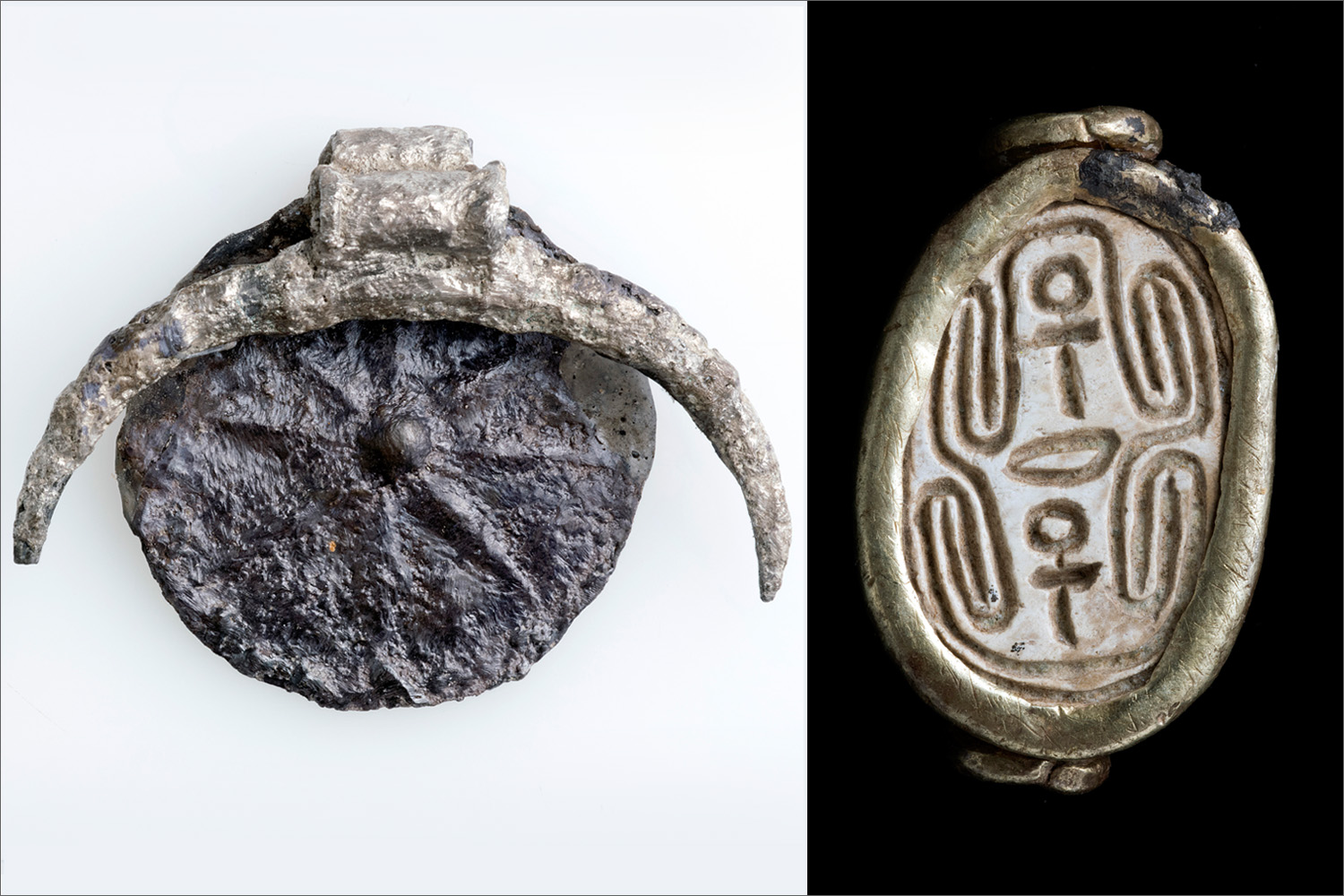Gezer Excavation: Gold and silver items discovered by NOBTS team shed light on the Canaanite culture
By NOBTS & INPA
Archaeological excavations conducted by the Israel Nature and Parks Authority and the New Orleans Baptist Theological Seminary, under the auspices of the Israel Antiquities Authority, exposed a rare treasure of silver and gold objects at Tel Gezer National Park last season.
The cache was discovered in the foundations of a room built near the city wall and belongs to the Canaanite period (Middle Bronze Age II) and dating to approximately 3600 years ago.
Excavators Dr. Tsvika Tsuk, Dr. Eli Yannai, Dr. Dan Warner and Dr. Jim Parker believe that it was placed as part of a cultic function in the foundations of the structure, which consists of several rooms. The building appears to be of an administrative nature and its proximity to the city gate strengthens this hypothesis.
The cache was uncovered in a pottery jar that was upside-down and the pieces of the cache were laying in a lid (like a cover) and wrapped in linen cloth, the remains of which are a part of the finds. Dr. Naama Sukenik and Dr. Orit Shamir specialist in organic materials, working in the laboratory of the Israel Antiquities Authority, examined the remains of fabric and according to the shape of the fibers and weaving techniques detected in the raw material, it is certainly linen. Some areas are spliced (a twist) of the threads together - a method typical of linen during these periods. The fabric is preserved in a unique way thanks to the fact that it was attached to the different metal parts of the cache.
The finding of this linen demonstrates the importance of the research of fabrics as it relates to archaeological research. Up until now, there were only two other textile finds dating to the Middle Bronze Age II period in Israel. One of these finds was at Tel Megiddo, which was also a cache with fabric wrapped around metal, and therefore saved. Linen cloth wrapped around the cache is very rare and the fact that it has survived for 3,600 years in the Mediterranean climate is surprising.
The treasure was cleaned and separated into five different pieces in the metal research part of the Israel Antiquities Authority laboratory by Helena Kuperschmidt. Three pieces are fragments of silver pieces such as rings and a necklace, but because of their conditions are not separated in detail. However, two parts were separated and cleaned and are the highlight of the cache.
The first part is a disc pendant cut from a silver sheet and embossed with an eight-pointed star with a diameter of 3.8 cm.; Silver pendant with a suspension tube formed of a rectangular sheet of silver rolled forward with raised edges. The distance between the ends of the crescent is 5.3 cm. Dr. Irit Ziffer believes these symbols represent the corresponding Canaanite goddess Ishtar and the god Sin of Mesopotamia. Ishtar is the goddess of fertility, love and sex, and Sin is the god of those who worship the moon.
These finds are the best preserved of those discovered in Israel to date.
The second part is an Egyptian scarab of the Hyksos period, which is covered with a gold frame.
Putting all these together, it seems to indicate that the cache was placed to establish a connection between the structure and the gods of the Canaanite, Mesopotamian, and Egyptian culture. This building complex is part of the city of the Middle Canaanite period and includes an impressive gate, wall and tower, and Canaanite water system, which is the world's largest.
The delegation plans to finish excavations at the water system this year. The Heritage Department of the Jerusalem and Heritage ministry and the Israel Nature and Parks Authority intends to develop access to allow the public to come down to the bottom of the water system and see this magnificent edifice.

